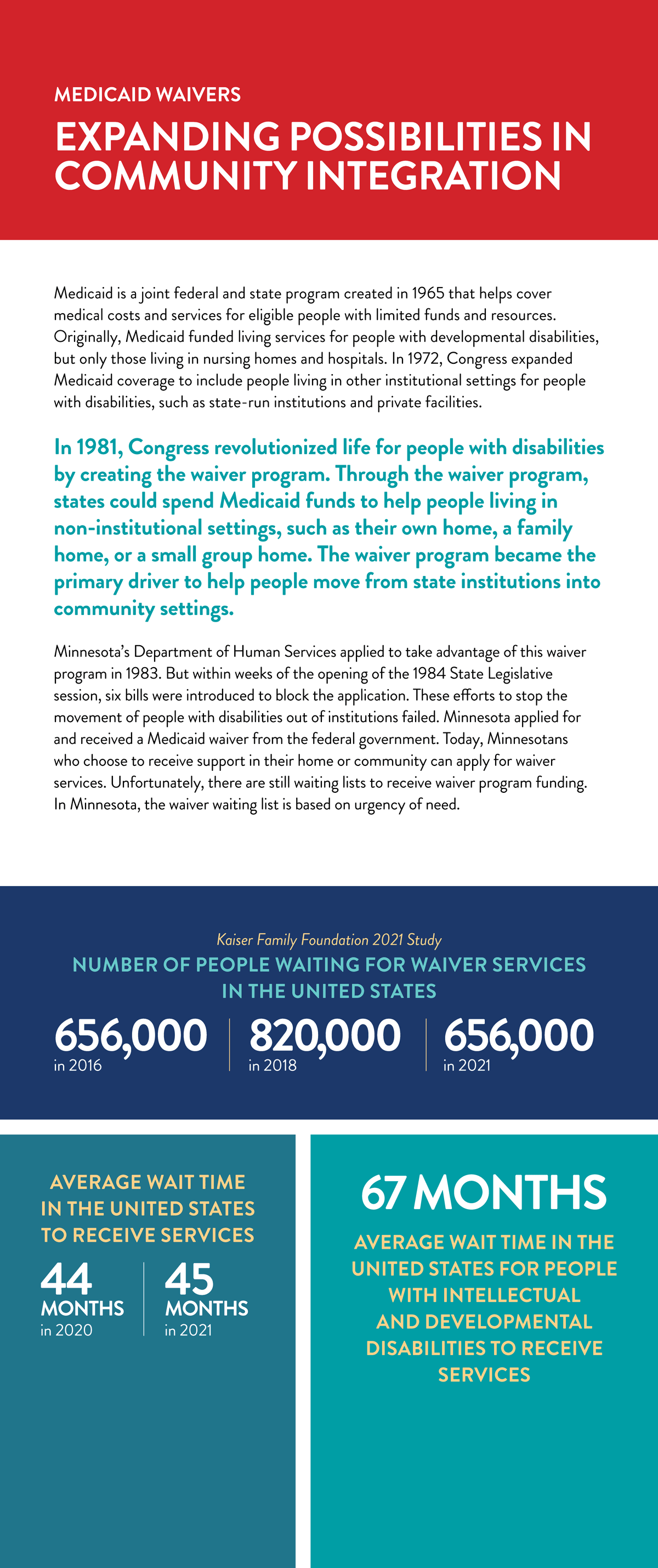An Unfinished Journey |
Civil Rights for People with Developmental Disabilities and the Role of the Federal Courts
Banner 14: Medicaid Waivers – Expanding Possibilities in Community Integration
View the PDF of all banners »
Return to Banner Index »
Medicaid Waivers: Expanding Possibilities in Community Integration
Medicaid is a joint federal and state program created in 1965 that helps cover medical costs and services for eligible people with limited funds and resources. Originally, Medicaid funded living services for people with developmental disabilities, but only those living in nursing homes and hospitals. In 1972, Congress expanded Medicaid coverage to include people living in other institutional settings for people with disabilities, such as state-run institutions and private facilities.
In 1981, Congress revolutionized life for people with disabilities by creating the waiver program. Through the waiver program, states could spend Medicaid funds to help people living in non-institutional settings, such as their own home, a family home, or a small group home. The waiver program became the primary driver to help people move from state institutions into community settings.
Minnesota's Department of Human Services applied to take advantage of this waiver program in 1983. But within weeks of the opening of the 1984 State Legislative session, six bills were introduced to block the application. These efforts to stop the movement of people with disabilities out of institutions failed. Minnesota applied for and received a Medicaid waiver from the federal government. Today, Minnesotans who choose to receive support in their home or community can apply for waiver services. Unfortunately, there are still waiting lists to receive waiver program funding. In Minnesota, the waiver waiting list is based on urgency of need.
Kaiser Family Foundation 2021 Study
Number of people waiting for waiver services in the United States:
- 656,000 in 2016
- 820,000 in 2018
- 656,000 in 2021
Average wait time in the United States to receive services:
- 44 months in 2020
- 45 months in 2021
67 months: Average wait time in the United States for people with intellectual and developmental disabilities to receive services.

